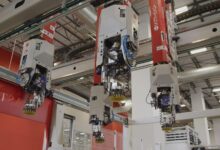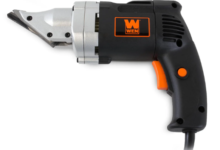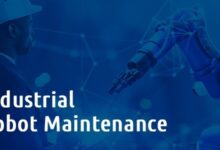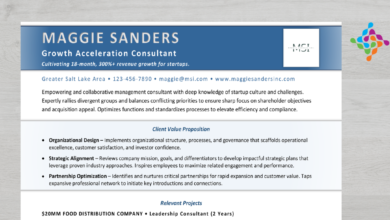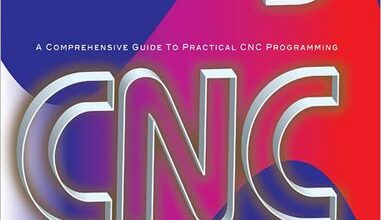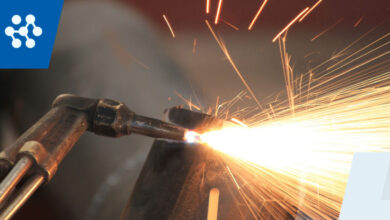Industrial Cutting: Efficiency and Precision
Advertisement
The Value of Industrial Cutting in today’s Manufacturing Industry
Industrial cutting plays a crucial role in the manufacturing industry by providing both efficiency and precision in the production process. With advancements in technology, industrial cutting methods have evolved to meet the growing demand for high-quality products while minimizing waste and maximizing productivity. This article will delve into the benefits and drawbacks of industrial cutting, as well as provide detailed information on how it can significantly impact businesses in various sectors.
Strengths of Industrial Cutting: Efficiency and Precision
One of the primary strengths of industrial cutting is its ability to streamline the manufacturing process, resulting in increased efficiency and productivity. By using cutting-edge technologies such as laser cutting and water jet cutting, manufacturers can achieve precise cuts with minimal material waste, ultimately saving time and resources. Additionally, industrial cutting allows for a high degree of customization, enabling businesses to meet specific client requirements and stay ahead of the competition.
Another strength of industrial cutting is its versatility across a wide range of materials, including metals, plastics, and composites. This flexibility makes it an ideal solution for industries such as aerospace, automotive, and electronics, where complex shapes and designs are common. Moreover, industrial cutting equipment can be easily integrated into existing production lines, making it a cost-effective solution for businesses looking to upgrade their operations without significant downtime.
Furthermore, industrial cutting contributes to overall cost savings by reducing material waste and labor costs associated with traditional cutting methods. By implementing automated cutting systems, manufacturers can minimize human error and improve cutting accuracy, leading to higher-quality products and increased customer satisfaction. In today’s competitive market, efficiency and precision are no longer optional but essential for businesses to thrive and succeed.
Moreover, industrial cutting technologies are constantly evolving to meet the changing demands of the industry, with manufacturers investing in research and development to improve cutting speed, accuracy, and reliability. From robotic cutting systems to advanced software solutions, the future of industrial cutting looks promising, offering endless possibilities for innovation and growth.
Despite its many strengths, industrial cutting also has its limitations and challenges that businesses need to consider before implementing these technologies in their operations. Factors such as initial investment costs, maintenance requirements, and operator training can impact the overall effectiveness of industrial cutting systems and must be carefully evaluated to ensure a positive return on investment.
Another potential weakness of industrial cutting is its dependency on electricity and other energy sources, which can lead to increased operational costs and environmental impact. As sustainability becomes a key concern for businesses worldwide, manufacturers are increasingly looking for ways to reduce energy consumption and minimize their carbon footprint without compromising on efficiency and productivity.
Additionally, industrial cutting equipment may require regular maintenance and calibration to ensure optimal performance, leading to downtime and production delays if not properly managed. Businesses must have a robust maintenance plan in place to address any issues promptly and prevent costly breakdowns that could disrupt the entire manufacturing process.
Efficiency and Precision in Industrial Cutting: A Comprehensive Overview
Efficiency and precision are two critical factors that businesses consider when choosing industrial cutting methods for their production needs. Laser cutting, for example, is known for its high level of precision and the ability to cut complex shapes with minimal distortion, making it an ideal choice for industries such as medical devices, electronics, and signage. Water jet cutting, on the other hand, is valued for its versatility and the ability to cut a wide range of materials, including metals, stone, and glass, with no heat-affected zone.
Computer numerical control (CNC) cutting machines combine both efficiency and precision by using computer-aided design (CAD) software to program cutting paths and sequences, resulting in accurate cuts with minimal material waste. CNC cutting is widely used in industries such as automotive, aerospace, and furniture manufacturing, where consistency and repeatability are essential for producing high-quality products on a large scale.
Plasma cutting is another popular industrial cutting method that offers efficiency and precision for cutting thicker materials such as steel and aluminum. By using an electrically conductive gas to create a high-temperature plasma arc, plasma cutting can achieve fast and accurate cuts with minimal distortion and a smooth edge finish, making it a cost-effective solution for various industrial applications.
Wire EDM (electrical discharge machining) is a precise cutting method that uses a wire electrode to erode material in a controlled manner, resulting in intricate and accurate cuts with tight tolerances. Wire EDM is commonly used in industries such as tool and die making, aerospace, and medical devices, where high precision and fine details are critical for producing complex components and parts.
Overall, industrial cutting technologies offer a wide range of options for businesses looking to improve their production processes and enhance product quality. By choosing the right cutting method based on their specific requirements and budget constraints, manufacturers can achieve significant cost savings, increased efficiency, and a competitive edge in today’s market.
Furthermore, industrial cutting plays a vital role in driving innovation and technological advancements in various industries, helping businesses stay ahead of the curve and meet the evolving needs of customers. Whether it’s laser cutting for intricate designs or water jet cutting for thick materials, industrial cutting offers endless possibilities for creativity and customization, enabling businesses to expand their capabilities and explore new opportunities for growth.
With advancements in automation and digitalization, industrial cutting is poised to revolutionize the manufacturing industry by accelerating production processes, reducing lead times, and improving overall product quality. By investing in cutting-edge technologies and staying abreast of the latest trends in industrial cutting, businesses can position themselves for long-term success and sustainable growth in a rapidly changing business environment.
Industrial Cutting: Efficiency and Precision Table
| Cutting Method | Advantages | Disadvantages |
|---|---|---|
| Laser Cutting | High precision, minimal distortion, versatile | High initial investment, maintenance requirements |
| Water Jet Cutting | Can cut a wide range of materials, no heat-affected zone | Slower cutting speed, abrasive wear on nozzle |
| CNC Cutting | Accurate cuts, minimal material waste, computer-controlled | Operator training, programming time |
| Plasma Cutting | Fast cutting speed, cost-effective for thicker materials | Produces heat-affected zone, limited cutting thickness |
| Wire EDM | High precision, tight tolerances, intricate cuts | Slow cutting speed, limited to conductive materials |
Frequently Asked Questions about Industrial Cutting: Efficiency and Precision
1. What are the key benefits of industrial cutting?
Industrial cutting offers increased efficiency, precision, and cost savings for businesses looking to enhance their production processes and stay competitive in the market.
2. Which industries can benefit most from industrial cutting technologies?
Industries such as aerospace, automotive, electronics, and medical devices stand to gain the most from industrial cutting methods due to their complex cutting requirements and quality standards.
3. What are the common challenges associated with industrial cutting?
Key challenges include high initial investment costs, maintenance requirements, operator training, energy consumption, and environmental impact.
4. How can businesses optimize their industrial cutting processes for maximum efficiency and precision?
By investing in cutting-edge technologies, regular maintenance, operator training, energy-efficient equipment, and sustainable practices, businesses can achieve optimal results with industrial cutting.
5. What role does automation play in industrial cutting?
Automation enhances efficiency, productivity, and accuracy in industrial cutting by reducing human error, improving cutting speed, and enabling seamless integration with other manufacturing processes.
6. How can businesses stay ahead of the competition with industrial cutting?
By adopting the latest cutting technologies, embracing innovation, focusing on quality control, and providing customized solutions, businesses can differentiate themselves in the market and attract new customers.
7. What trends are shaping the future of industrial cutting?
Key trends include industry 4.0, digitalization, smart manufacturing, sustainability, predictive maintenance, and artificial intelligence, all of which are driving advancements in industrial cutting methods and equipment.
Conclusion: Embracing Industrial Cutting for Growth and Innovation
In conclusion, industrial cutting offers a multitude of benefits for businesses seeking to improve their manufacturing processes, enhance product quality, and stay competitive in today’s fast-paced market. By leveraging the efficiency and precision of cutting technologies such as laser cutting, water jet cutting, CNC cutting, plasma cutting, and wire EDM, businesses can achieve cost savings, operational excellence, and customer satisfaction.
While industrial cutting has its drawbacks and challenges, businesses can overcome these obstacles by investing in training, maintenance, energy-efficient solutions, and sustainable practices that promote long-term growth and success. By staying informed about the latest trends in industrial cutting and embracing innovation, businesses can position themselves as industry leaders and drive positive change in their respective sectors.
It is essential for businesses to recognize the value of industrial cutting as a catalyst for growth and innovation, enabling them to meet the evolving needs of customers, adapt to market demands, and explore new opportunities for expansion. By embracing the efficiency and precision of industrial cutting technologies, businesses can take their operations to the next level and achieve sustainable growth in a competitive business landscape.
Ultimately, industrial cutting is more than just a manufacturing process—it is a strategic investment that can transform businesses, drive innovation, and propel industries forward. By harnessing the power of cutting-edge technologies and leveraging the expertise of industry professionals, businesses can unlock their full potential and create a brighter future for themselves and their customers.
Take action today and explore the possibilities of industrial cutting for your business. Embrace efficiency and precision, unlock growth and innovation, and position yourself for success in a rapidly changing world. The future of manufacturing is here, and industrial cutting is leading the way towards a brighter tomorrow.
Remember, the key to success lies in your hands. Seize the opportunity, embrace the challenge, and embark on a journey of transformation and excellence with industrial cutting by your side. Together, we can shape a better future and create lasting value for generations to come. Let’s make it happen!
Disclaimer
The information provided in this article is for general informational purposes only and should not be construed as professional advice. The content is based on personal opinions and experiences and may not reflect the views of all individuals or businesses. Readers are advised to conduct their research and consult with industry experts before making any decisions based on the information provided. The author and publisher of this article are not responsible for any errors or omissions in the content and shall not be liable for any damages or losses resulting from its use. Thank you for your understanding and cooperation.
